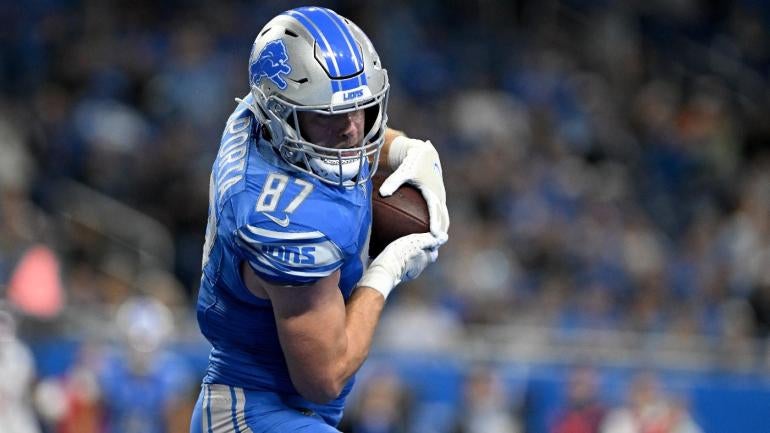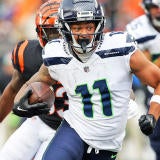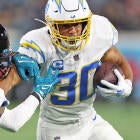
The era of going heavy on wide receivers is in full swing, and the tight end position has become stronger at the top than it has been in a long time.
Pair that with a running back slate that has added meaningful depth over the past two seasons and you'll have the makings of several pathways you can take to build your rosters this preseason.
The macro trends in football at this point are well-known, and they fit right in with what's happening in Fantasy Football. Teams are passing at high rates and using as many different people to catch passes as they can, especially when they don't have that Alpha-type receiver. This doesn't mean teams no longer like to run the ball -- they certainly will, especially if defenses continue to play zone coverage to scare offenses from throwing deep. But more teams than ever subscribe to a committee approach because it makes sense financially and structurally. Now when most teams lose a running back for a game, a month, or the season, the contingency plan is strong.
Implementing these concepts into Fantasy draft plans is pretty easy, but it's better to break it all down by position and lay out what you should do before you draft as well as what you might do once your draft is underway.

Fantasy Football Today Newsletter
Know What Your Friends Don't
Get tips, advice and news to win your league - all from the FFT podcast team.
Thanks for signing up!
Keep an eye on your inbox.
Sorry!
There was an error processing your subscription.
You'll also find my tiers for each position. I have been using them for almost two decades now as a way to sort not just who to take, but when. The tiers also show when there's a reduction in talent from one group of players to another based on expectations for Fantasy points. If you use these tiers as a baseline and then tweak them based on what you believe in and who you want to draft, you should not only be able to make easy decisions with each pick but also know in advance who you'll take with your next pick.
That makes drafting a lot less stressful and a lot more fun.
Tight end strategy
If there's a position that's changed drastically, this is it. The league has added several young, outstanding, impactful pass-catchers who can help differentiate Fantasy rosters. That's a change from what we previously experienced which was Travis Kelce and Mark Andrews at the top of the heap, then George Kittle almost on par, then a bunch of other fledgling tight ends who, on a good week, would deliver 10-to-12 PPR points.
Now there are more tight ends with high expectations, and if they pull through then there will be more Fantasy lineups with good tight ends. That's great, but it doesn't make those lineups as unique as they were as recently as two years ago. Back then, having Kelce meant having a huge edge over other managers. Now? Kelce is getting older and other tight ends are getting better. That edge isn't as huge.
If you draft a tight end early, you're hoping to have a discernible advantage on most others in the league. The TEs in Tiers 1 and 2 will cost a top-60 pick (not a top-20 pick -- that's a change from 2023) and the payoff, if your tight end is productive, should be very good.
If you draft a tight end in the middle, you'll still come away with what should be a competitive player, just not one who has as much week-to-week upside. The Tier 3 guys will be taken between 60th and 80th overall and carry more upside than downside.
And if you wait for a tight end and draft one late, you should still find one who can hit that 10-PPR mark in at least half of the weeks. It's not anywhere near the same as the Kelces and LaPortas of the world, but then again neither is the cost. Tier 4 tight ends will start flying at 90th overall.
The depth at receiver and running back does make it easier to take a tight end early this year, in my opinion. And I would rather target a TE early than a QB.
Should you consider taking two tight ends? Depending on who you take I like the idea a lot because it adds a chance to unearth a good player you could either use as a flex, trade away for lineup help elsewhere or, if it comes down to it, replace the main tight end you drafted. Brock Bowers, T.J. Hockenson, and Pat Freiermuth are the three I'd really focus on.
Pre-draft homework:
* Do receptions count for MORE than what they do for WRs and RBs? If they do then prioritize tight ends and even consider taking two top-10 TEs.
* If you believe in a lot of running backs and a lot of wide receivers this year, you should prioritize tight end.
* If you do not believe a tight end can finish first or second on his team in targets, then you either should stream him just to see how the season begins or you should not draft him at all.
Tight end tiers PPR & non-PPR
S. LaPorta
DET
Sam LaPorta
DET
|
T. Kelce
KC
Travis Kelce
KC
|
M. Andrews
BAL
Mark Andrews
BAL
|
T. McBride
ARI
Trey McBride
ARI
|
D. Kincaid
BUF
Dalton Kincaid
BUF
|
E. Engram
JAC
Evan Engram
JAC
|
G. Kittle
SF
George Kittle
SF
|
K. Pitts
ATL
Kyle Pitts
ATL
|
B. Bowers
LV
Brock Bowers
LV
|
J. Ferguson
DAL
Jake Ferguson
DAL
|
T. Hockenson
MIN
T.J. Hockenson
MIN
|
D. Goedert
PHI
Dallas Goedert
PHI
|
D. Njoku
CLE
David Njoku
CLE
|
P. Freiermuth
PIT
Pat Freiermuth
PIT
|
D. Schultz
HOU
Dalton Schultz
HOU
|
I. Likely
BAL
Isaiah Likely
BAL
|
L. Musgrave
GB
Luke Musgrave
GB
|
H. Henry
NE
Hunter Henry
NE
|
C. Parkinson
LAR
Colby Parkinson
LAR
|
B. Sinnott
WAS
Ben Sinnott
WAS
|

















